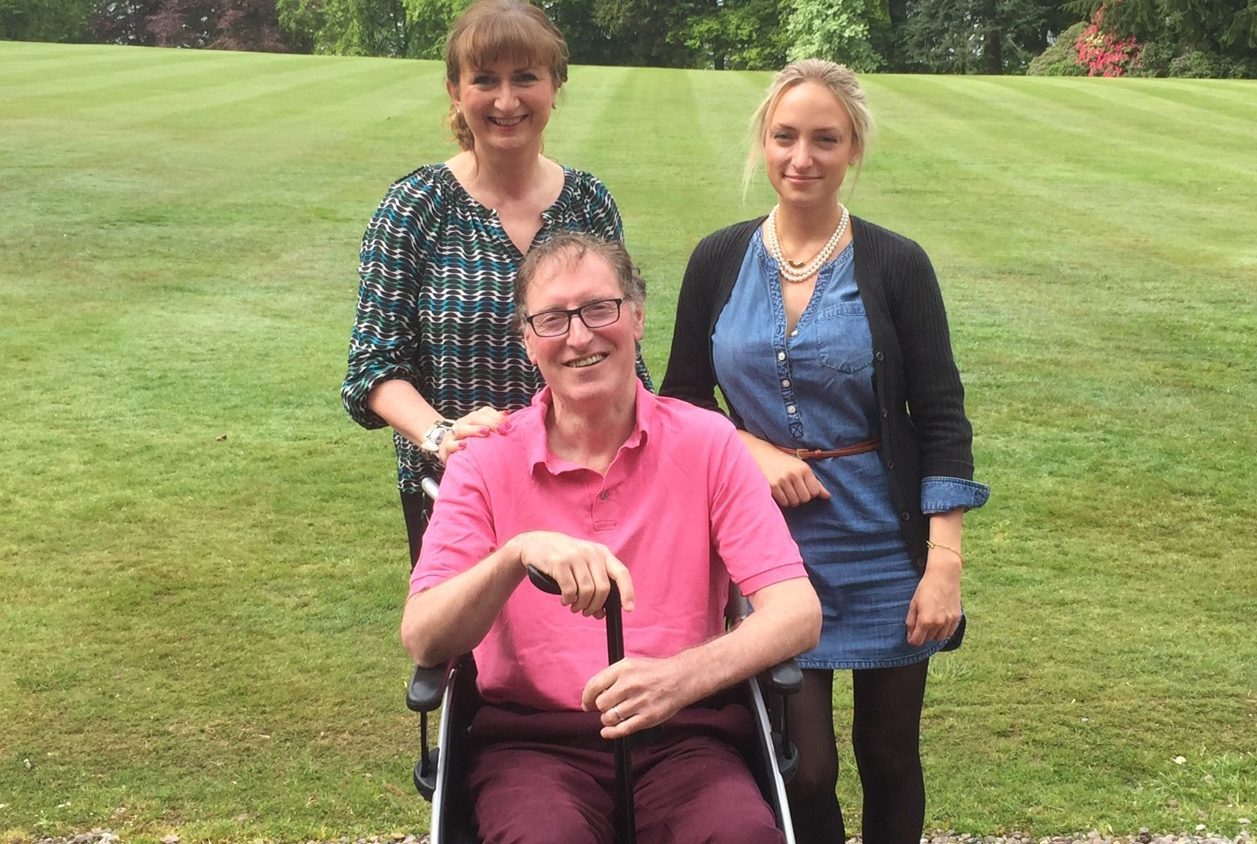
MILLIONS found the film The Theory Of Everything both moving and inspiring.
For Richard Selley, the story of physicist Stephen Hawking had a more personal – and shocking – connection.
Richard, 62, who is originally from Devon but now lives in Perth, had been experiencing various health issues without ever having the root of the problem confirmed.
“In January, 2015, before my diagnosis, I saw the film and it dawned on me. I said to myself, ‘I have motor neurone disease’,” says Richard.
“It started the same way, fumbling with my hands, unable to grasp objects. I just knew.”
Richard had started experiencing symptoms three years before.
“I noticed a weakness in my right hand, between my thumb and forefinger,” he says.
“But when I went to the doctors they didn’t know what the problem was.
“The same then began happening in my left hand and, later, my left leg.”
Richard spent three years seeing specialists, and having tests.
Finally, in March 2015, just a couple of months after his movie shock, he was finally was diagnosed with motor neurone disease (MND).
It’s a progressive terminal illness which prevents signals from the brain reaching the muscles. MND can cause someone to lose the ability to walk, eat, speak and breathe unaided.
Richard, who worked in Edinburgh as an economics teacher for 35 years, retired in 2009. He moved to Perth with wife, Elaine, just over a year ago.
The couple married in 2011, just before Richard started experiencing symptoms, and between them have five children.
Richard has two daughters, Lorna (36) and Megan (23), as well as three step-children.
“The news was shattering for the family, but a relief for me,” he says.
“The confirmation of knowing what I have is better than the uncertainty of having no diagnosis.”
Richard practices mindfulness and has tried to keep as positive as possible.
But his condition has continued to deteriorate and things he was able to do just a few months ago are increasingly difficult.
“I could still walk with a stick in March but now I need a frame or wheelchair to get around,” he says.
“My voice is dying and I am preparing for the time when I will have to use a synthetic voice on an iPad.”
A team of carers have just started to come in to lend support as he can no longer manage to shower, dress or prepare food on his own.
But his upbeat, whilst realistic, approach is helping others and he writes a blog, Momentswithmnd, about both his struggles and achievements.
“It’s very therapeutic,” he adds. “I love writing and try to inject some humour and positivity into it, while keeping it honest.”
Iain McWhirter, of MND Scotland, said: “We need more people like Richard to share their experience of MND, to raise awareness and to give people a greater understanding of the devastating impact it has on those affected.
“But Richard shows you can remain positive in the face of MND.”
For more, visit mndscotland.org.uk
READ MORE
Although golf is off the agenda, this man with motor neurone disease remains positive
MND Scotland helps motor neurone disease patient’s son to raise awareness via cycle challenge

Enjoy the convenience of having The Sunday Post delivered as a digital ePaper straight to your smartphone, tablet or computer.
Subscribe for only £5.49 a month and enjoy all the benefits of the printed paper as a digital replica.
Subscribe